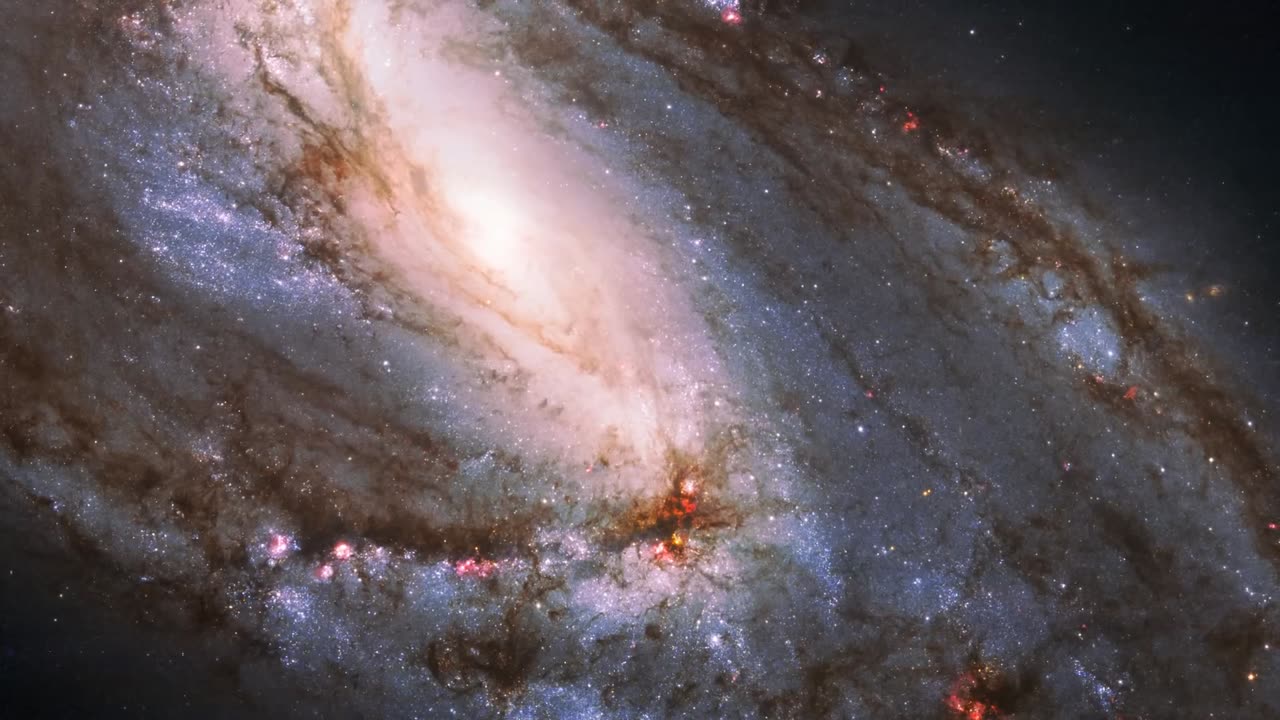Premium Only Content

♫♫♫ 100+ Hubble Space Telescope Photos ♥ Ultra HD (4K) ♥ Relax Music ♥ 1 Hour ♥ Slideshow
The Hubble Space Telescope (HST) is a space telescope that was launched into low Earth orbit in 1990, and remains in operation. Although not the first space telescope, Hubble is one of the largest and most versatile, and is well known as both a vital research tool and a public relations boon for astronomy. The HST is named after the astronomer Edwin Hubble, and is one of NASA's Great Observatories, along with the Compton Gamma Ray Observatory, the Chandra X-ray Observatory, and the Spitzer Space Telescope.
With a 2.4-meter (7.9 ft) mirror, Hubble's four main instruments observe in the near ultraviolet, visible, and near infrared spectra. Hubble's orbit outside the distortion of Earth's atmosphere allows it to take extremely high-resolution images, with substantially lower background light than ground-based telescopes. Hubble has recorded some of the most detailed visible light images ever, allowing a deep view into space and time. Many Hubble observations have led to breakthroughs in astrophysics, such as accurately determining the rate of expansion of the universe.
The HST was built by the United States space agency NASA, with contributions from the European Space Agency. The Space Telescope Science Institute (STScI) selects Hubble's targets and processes the resulting data, while the Goddard Space Flight Center controls the spacecraft.
Space telescopes were proposed as early as 1923. Hubble was funded in the 1970s, with a proposed launch in 1983, but the project was beset by technical delays, budget problems, and the Challenger disaster (1986). When finally launched in 1990, Hubble's main mirror was found to have been ground incorrectly, compromising the telescope's capabilities. The optics were corrected to their intended quality by a servicing mission in 1993.
Hubble is the only telescope designed to be serviced in space by astronauts. After launch by Space Shuttle Discovery in 1990, four subsequent Space Shuttle missions repaired, upgraded, and replaced systems on the telescope. A fifth mission was canceled on safety grounds following the Columbia disaster (2003). However, after spirited public discussion, NASA administrator Mike Griffin approved one final servicing mission, completed in 2009. The telescope is operating as of 2016, and could last until 2030–2040. Its scientific successor, the James Webb Space Telescope (JWST), is scheduled for launch in 2018.
--------------------------
-
 4:23:49
4:23:49
FreshandFit
11 hours agoIsrael v Palestine Debate! Respect A Man If He Says No Or Yes To A Girl's Trip?
147K160 -
 2:05:33
2:05:33
TheSaltyCracker
13 hours agoTech Bros try to Hijack MAGA ReeEEeE Stream 12-27-24
242K479 -
 2:01:25
2:01:25
Roseanne Barr
17 hours ago $35.92 earnedJeff Dye | The Roseanne Barr Podcast #80
118K65 -
 7:32
7:32
CoachTY
15 hours ago $10.93 earnedWHALES ARE BUYING AND RETAIL IS SELLING. THIS IS WHY PEOPLE STAY BROKE!!!
93.6K8 -
 1:01:00
1:01:00
Talk Nerdy 2 Us
12 hours ago💻 From ransomware to global regulations, the digital battlefield is heating up!
32.8K1 -
 3:00:24
3:00:24
I_Came_With_Fire_Podcast
14 hours agoHalf the Gov. goes MISSING, Trump day 1 Plans, IC finally tells the Truth, Jesus was NOT Palestinian
70.8K32 -
 4:11:49
4:11:49
Nerdrotic
17 hours ago $39.38 earnedThe Best and Worst of 2024! Sony Blames Fans | Batman DELAYED | Nosferatu! |Friday Night Tights 334
193K32 -
 7:55:51
7:55:51
Dr Disrespect
21 hours ago🔴LIVE - DR DISRESPECT - WARZONE - SHOTTY BOYS ATTACK
244K33 -
 1:30:23
1:30:23
Twins Pod
20 hours agoHe Went From MARCHING With BLM To Shaking Hands With TRUMP! | Twins Pod - Episode 45 - Amir Odom
149K33 -
 1:02:30
1:02:30
Exploring With Nug
22 hours ago $4.46 earned2 Duck Hunters Missing After Kayak Capsizes!
75.3K4